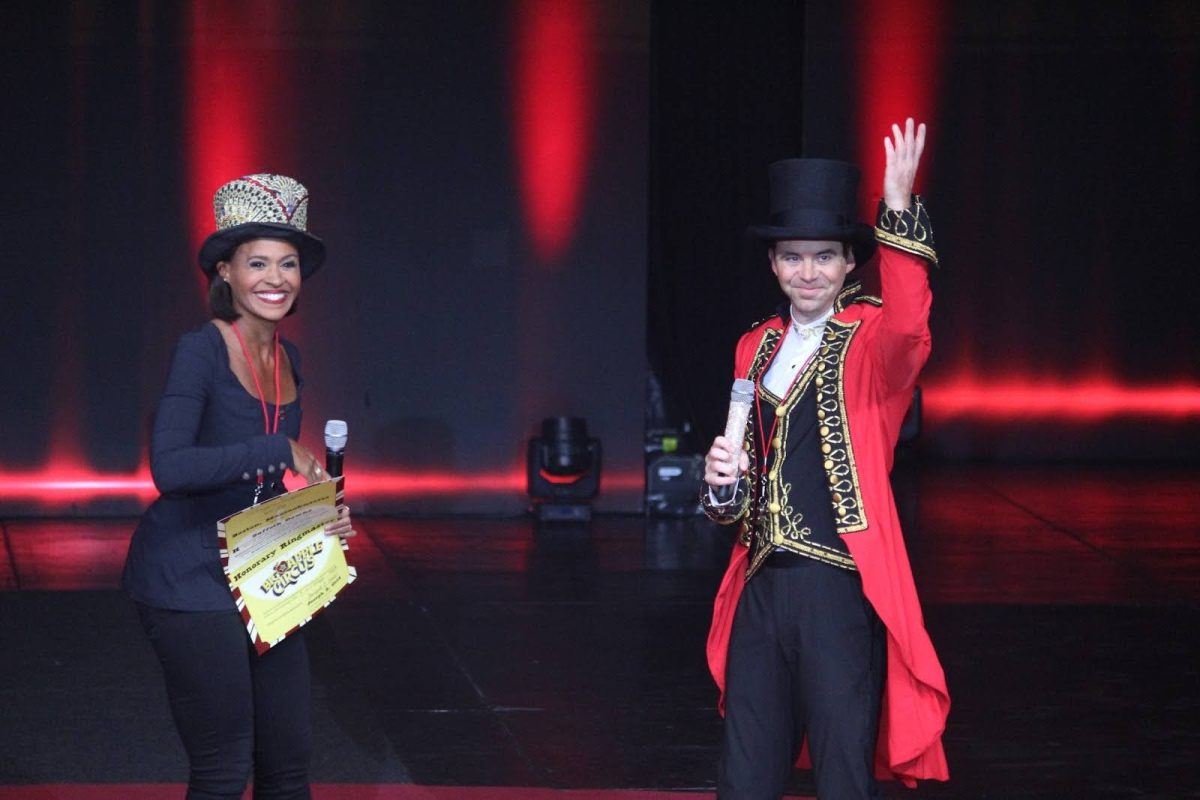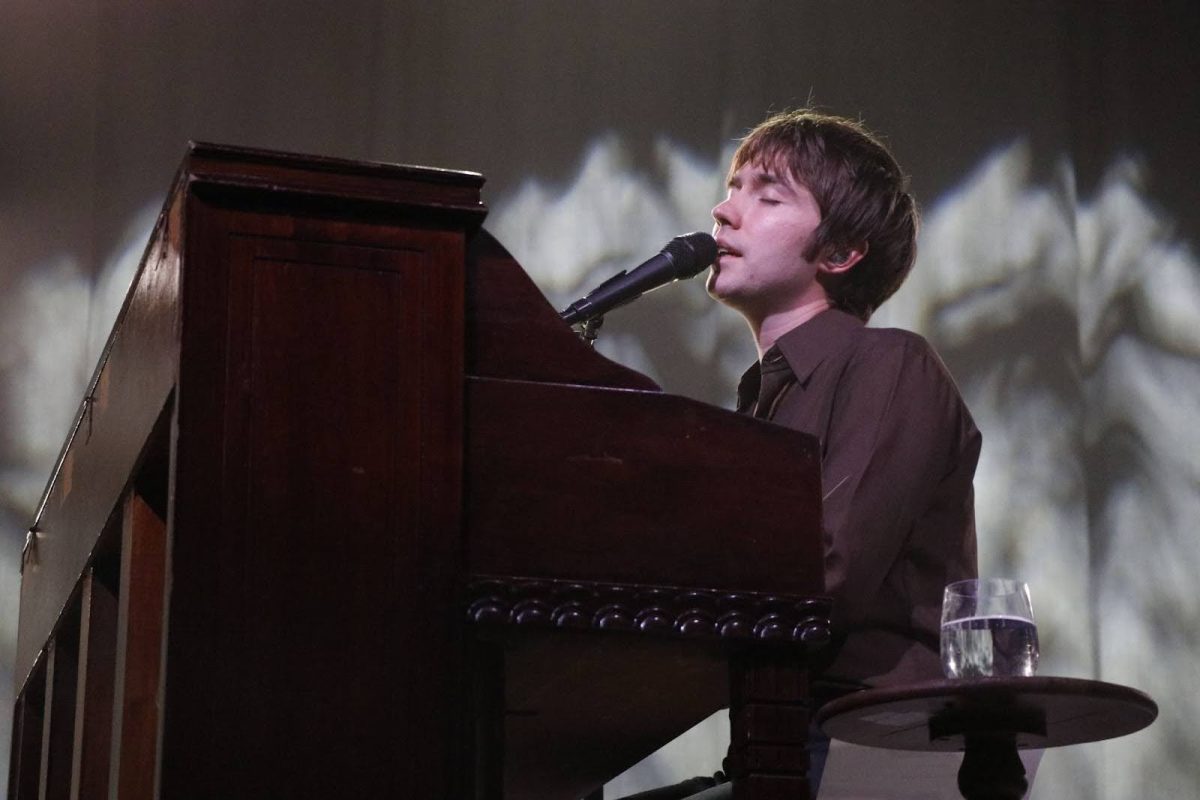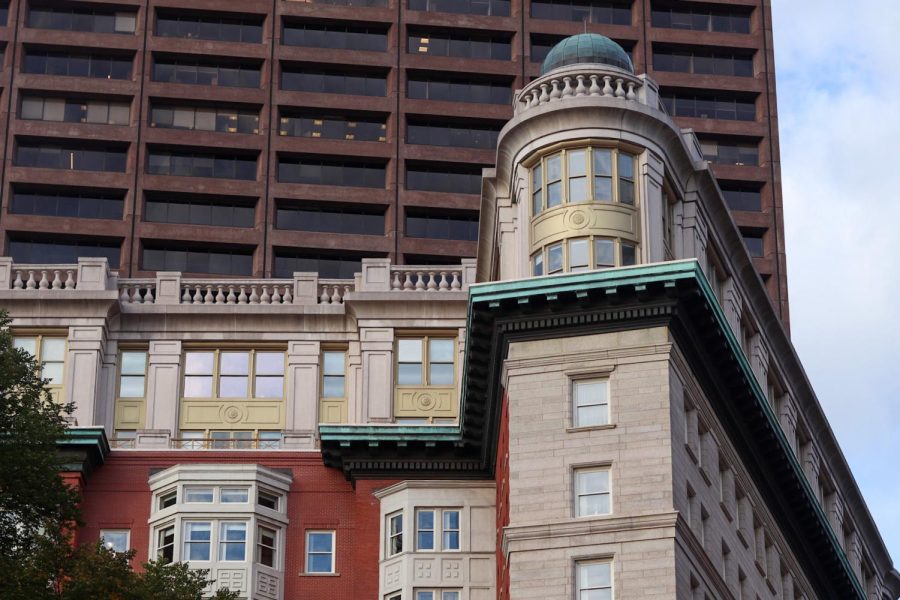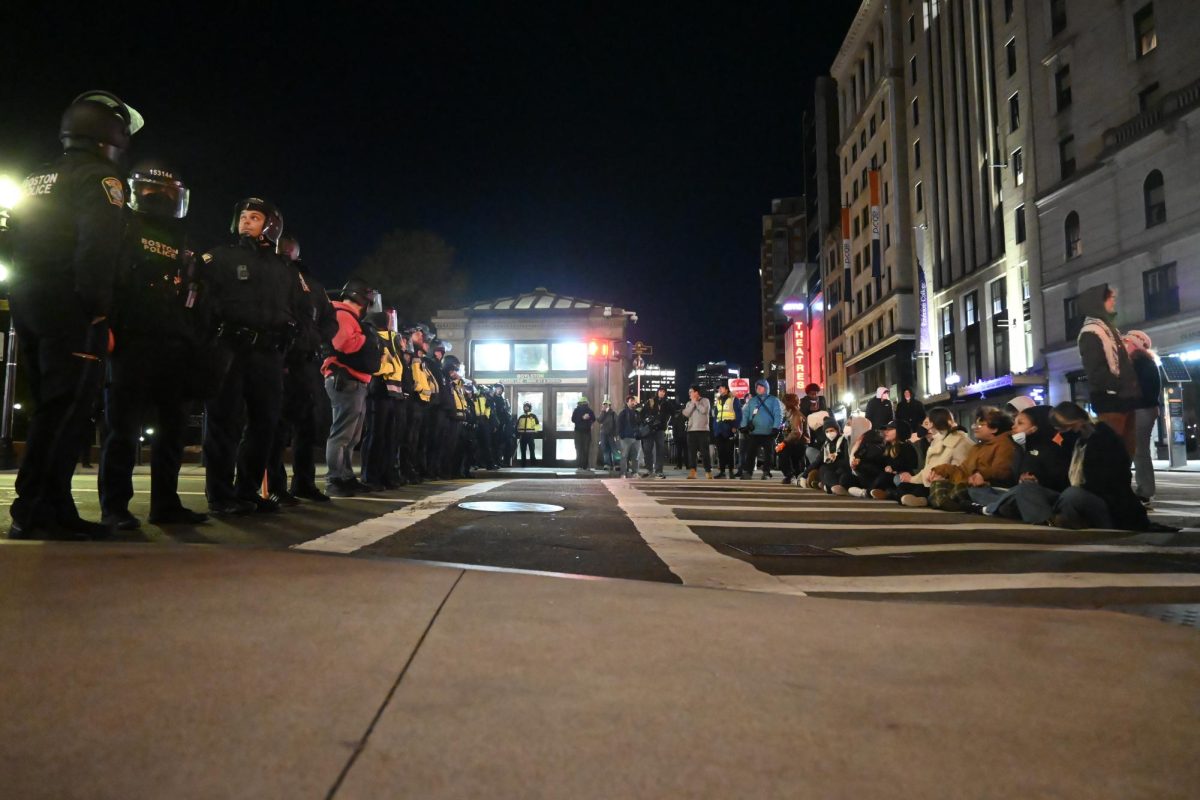In a mesmerizing haze, 24 dancers repeat a combination as they descend down a ramp. Under the dim, blue spotlight of a dark forest backdrop, their wispy white tutus stand out like lightening in the night. The movements they repeat are relatively recognizable, like an arabesque, followed by an arching of the back. They are the kind you might see at the barre during warmups.
But there is a sort of unprecedented harmony present. The flawlessness with which they move appears intuitive to them. They perform not as 24 individuals, but as one emulation of emotion, and as such it is easy to get drawn into an enchantment.
The scene, called “The Kingdom of the Shades,” is the grand third and final act to “La Bayadère,” the incredibly challenging work that the Boston Ballet chose to launch its 50th season with at the Boston Opera House on Oct. 24.
Set in ancient India, “La Bayadère” at its core is a tale of emotions. It presents the star-crossed love between Nikiya, a “bayadère,” or temple dancer, and Solor, a warrior. The two are unable to be together due to the jealousy of the High Brahmin, who loves Nikiya, and Gamzatti, the Rajah’s daughter who wishes to marry Solor. When Nikiya is killed in an act of revenge, Solor smokes opium to relieve his grief, where he enters the vision of the Kingdom of the Shades and rejoins her.

Remarkable about “La Bayadère” is that the emotions and themes explored in the work — love, jealousy, impulse, death and revenge — are as relatable now as they were when it was first presented.
The work originally premiered in 1877 alongside choreography by Marius Petipa and music by Ludwig Minkus. The present version is the adaptation by Florence Clerc, which saw its world premiere in 2010.
And it should come as no surprise that the Boston Ballet should select it again, given the company’s mission statement that aims to offer shows that ‘reflect timeless emotions.’
“It’s interesting because a lot of people think of ‘The Nutcracker’ for the Boston Ballet,” said auidence viewer Sarah King of the season opener.
“La Bayadère” is quite unique in terms of choreography. “The Kingdom of the Shades” displays the level of reservation one might expect from a classical ballet. But, the show is not that way throughout. In contrast to the demure, softened nature of the final act, the first two are filled with passionate and refreshing movements that would seem to almost tap into the contemporary, if not for the classical grace with which they were performed.
The juxtaposition between these two tones helps to amplify the changing emotions as the plot unfolds. It also allows the show to appeal to a variety of interests and knowledge-levels of the art.
“I’m not an expert at ballet, but I’m enjoying it,” said audience member Dan Epps.
The dancers also are spectacular in bringing the very strong characters they were given to life, a task more difficult than it appears.
In particular, Lia Cirio (Nikiya), Dusty Button (Gamzatti), and Lasha Khozashvili (Solor) shine in their complex roles.
A dance from the second act where Gamzatti and Nikiya have their first conflict over Solor displays their emotional range as performers. As the physical altercation escalates in a matter of minutes, the audience experiences their transition from heartbreak, jealousy and remorse. At no point in the show, will their expressions ever seem rehearsed or unnatural.
The performances are also charged by the exquisite bejeweled costumes and backdrops that are a delight to the eyes. Lush forests and the golden archways of the Rajah’s palace light up the stage in the first two acts.
A favorite from the crowd was Jeffrey Cirio, who was painted a shimmery gold for the role of the golden idol at the betrothal ceremony. He was greeted with applause from the audience as he leaped high across the stage.
“This is certainly the most elaborate of costumes and sets,” said Epps, who hails from Washington D.C. and has also seen ballet performances there.
“La Bayadère” ended with a standing ovation from the audience on its opening night.
Presentations of the show will run through Nov. 3.



















